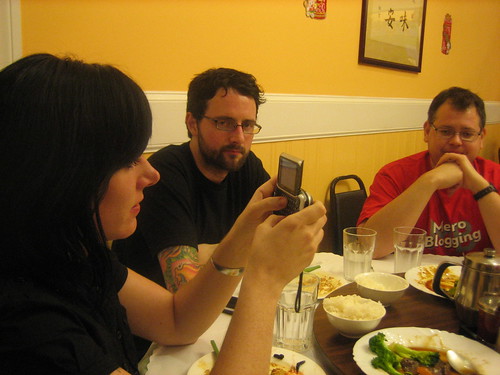When the topics of cell phones, social media websites, and digital technologies come up in conversation, I frequently hear adults bemoan teens and and their inability to exert proper digital discipline with these interactive tools. Today’s Associated Press article, “Courts Cracking Down on Texting Jurors,” highlights the fact that plenty of adults face social media challenges too.
Last year a San Francisco Superior Court judge dismissed 600 potential jurors after several acknowledged going online to research the criminal case before them.
Baltimore Mayor Sheila Dixon challenged her misdemeanor embezzlement conviction after discovering five jurors “friended” one another on Facebook during the trial.
And a federal judge in Florida declared a mistrial after eight jurors admitted Web surfing about a drug case.
Twitter and social media use guidelines have been adopted by some federal courts to address these issues:
“You may not use any electronic device or media” in connection with the case, the recommended federal instructions admonish. They also bar visits to “any Internet chat room, blog, or website such as Facebook, My Space, LinkedIn, YouTube or Twitter.”
The guidelines were developed “to address the increasing incidence of juror use of such devices as cellular telephones or computers to conduct research on the Internet or communicate with others about cases,” according to a memo to federal judges from the committee’s chief, U.S. District Court Judge Julie Robinson of Topeka, Kan.
“Such use,” the judge noted, “has resulted in mistrials, exclusion of jurors, and imposition of fines.”
Just as judges in our courts are recognizing the need for “social media guidelines,” some educational leaders are recognizing the need for these guidelines in our schools as well. Social media guidelines go beyond acceptable use policies (AUPs) and rules. They are guidelines designed to catalyze CONVERSATIONS about appropriate and inappropriate uses of digital technologies in various contexts, and to GUIDE individuals as they make decisions about when to use or not use available technology tools.
While it may be appropriate for courts to ban mobile technologies, this is NOT the correct choice for our schools and centers of learning. If educators as well as parents continue to abdicate the responsibility to help students learn “digital discipline,” who is going to meet this dire societal need? We each need to step up to the plate.
Karen Montgomery and I presented a session at the 2009 National Educational Computing Conference (NECC) on social media guidelines for schools, and created a Facebook group with the same focus / theme. In our Powerful Ingredients 4 Blended Learning (PI4BL) workshops, we encourage schools to adopt social media guidelines as part of ongoing efforts to proactively leverage the constructive power of social media and other digital technologies.
The Social Media Guidelines wiki project is a great place to start to find examples of social media guidelines adopted by different schools. Cell phones, text messaging, and the issues which arise when learners of ANY age choose to use (or mis-use) these tools are NOT going away. We all need to discuss and practice digital discipline. Next time you have jury duty, remember to leave your smartphone behind and take a printed book to read while you wait!

![]() photo credit: Cayusa
photo credit: Cayusa
For an excellent window into current trends with social media and digital technologies, see the PBS Frontline special and website, “Digital Nation: Life on the Virtual Frontier.” This documentary aired in February 2010, and is available in its entirety online.
Technorati Tags:
education, facebook, school, twitter, myspace, court, juror, jury, ban, socialmedia, media, policy, guideline

